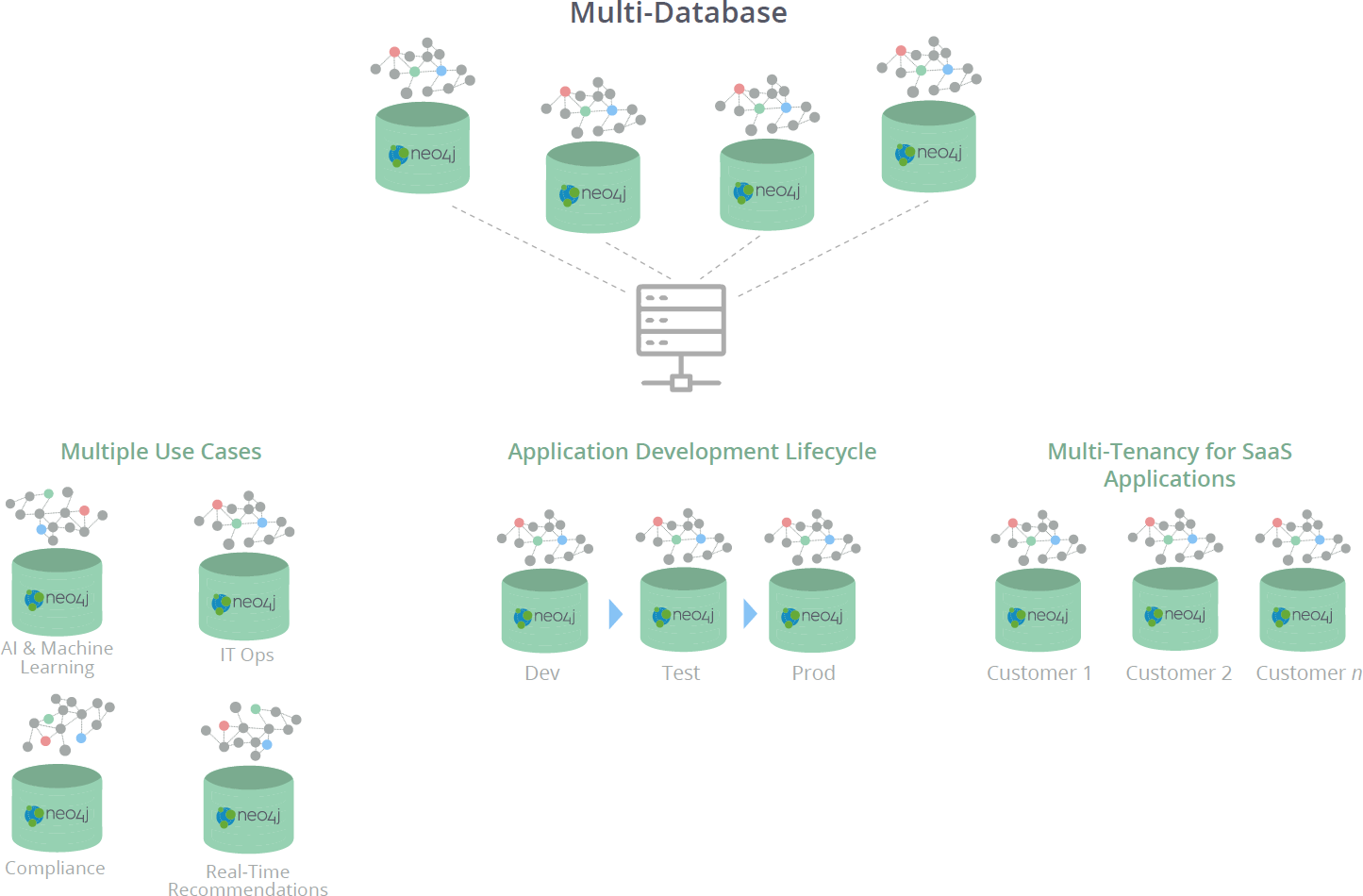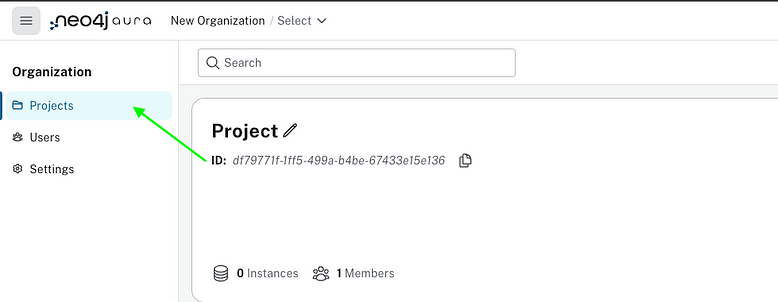The Future of the Intelligent Application: Business Agility

Vice President, Product Marketing
4 min read

Such applications require unlimited scalability and granular strong security. But perhaps most of all, these applications must embrace and enable change and innovation. From data models to infrastructure, the Neo4j Graph Database makes it easy to fluidly evolve your solution as business requirements change.
Last week, in blog three of our four-part series on the future of the intelligent application, we looked at the power of applying granular security to elements of the graph.
This week, in our final blog in this series, we will discuss how Neo4j provides business agility by design through multi-database and cloud deployment options.
Multi-Database
Neo4j offers full multi-database capabilities with separation of data, allowing multiple databases to be run inside a single Neo4j cluster.
Neo4j’s multi-database capability provides significant operational efficiency, security and agility for B2B SaaS multi-tenancy, development convenience and regulatory compliance.
Many production applications need physical data isolation underneath shared infrastructure. In a single server or cluster, Neo4j supports multiple databases, whether those databases have the same schema or distinct schemas.
The ability to support multiple databases with the same schema is critical for multitenant environments, such as SaaS applications where each user’s data is kept in a separate database. Such a multitenant environment offers physically separated storage and replication.
Multitenancy enables you to optimize resources in a typical cloud environment. Suppose a server is set up to handle 10 tenants. If one of those tenants is heavily using the system and requires more resources, the database for that tenant can be easily moved to a dedicated server with more resources.
Another use case for multiple databases with the same schema is enhanced support for the application development lifecycle. A separate database may be used for development, another for testing and yet another for production. This ensures developers do not impact testing or production, and those involved in testing have a separate environment.
A single Neo4j instance may include multiple databases with entirely different schemas. For example, multiple databases supporting the needs of different departments may reside in one cluster. A graph database used for real-time recommendations may coexist with graph databases for HR, marketing, sales and finance, all of which have different schemas and security requirements.
Flexible Deployment
Organizations want to be able to deploy graph solutions on-premise or in the cloud, depending on their requirements.
Neo4j offers multiple cloud deployment options. Many customers manage Neo4j themselves on their cloud of choice. Neo4j is also available as a managed service, whether that’s a white-glove service with 24×7 support for a global enterprise, or a self-serve, pay-as-you-go managed service to make it easy for developers to get started with graphs.
Organizations often manage Neo4j themselves – either in the data center or in the cloud – when they have a high need for compliance or data governance. These organizations require tight control over not just the infrastructure, but the location of their data. The expense of maintaining the expertise to manage every unique piece of software in their enterprise ecosystem is offset by the importance of isolating their data and their infrastructure from the outside world.
However, large enterprises have become increasingly comfortable with the security available in the cloud and the benefits of operating in cloud IaaS environments, both in terms of cost savings as well as flexibility. Today, even security-conscious companies have moved to the cloud in part to offload the burden of infrastructure management to cloud providers, but also to offload the risk and expertise involved in managing each element of their software architecture to providers. Neo4j works with multiple public cloud partners, including GCP, Azure and AWS.
Large companies may use Neo4j Cloud Managed Services, hiring the experts who built Neo4j to manage it in their own dedicated private cloud or virtual private cloud.
Smaller companies that want a production-quality instance of Neo4j have the option of choosing Neo4j AuraDB. Neo4j AuraDB is a fully managed graph database as a service, built specifically for startups and small technology companies. Neo4j AuraDB manages operations and security and offers 24×7 availability. Neo4j AuraDB allows smaller organizations to start working with a production-quality instance of Neo4j in one click.
Conclusion
The future of the database is the graph data model, reflective of the highly connected world we live in.
The more an organization understands the power of graph queries and graph algorithms, the more demand they have for graph database technology. Once you decide to add graph technology to your infrastructure, you need enterprise-grade capabilities, not just a graph layer on top of an existing data store.
Neo4j has invested time and expertise in solving the difficult computer science problems inherent in scaling a graph database. As a result, Neo4j is the world’s leading graph database, positioned to handle the most complex enterprise use cases.
Get My White Paper









